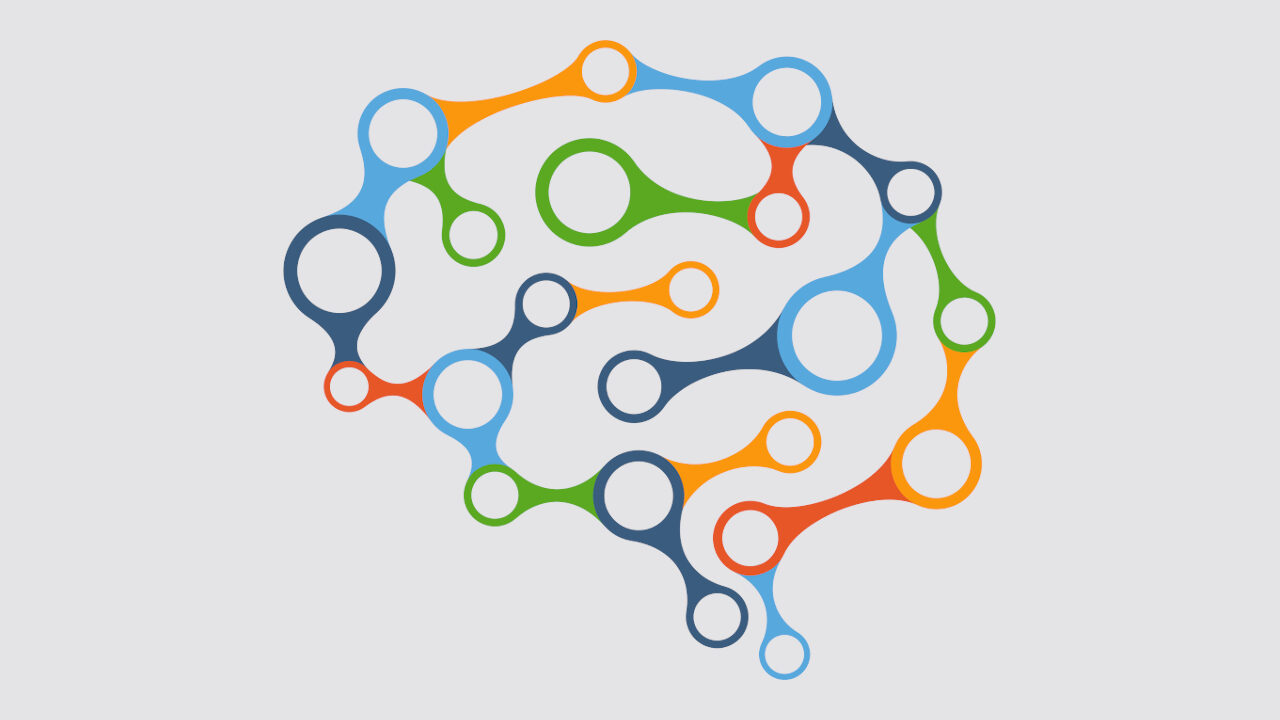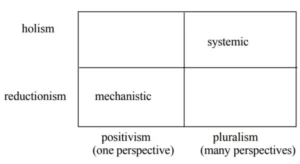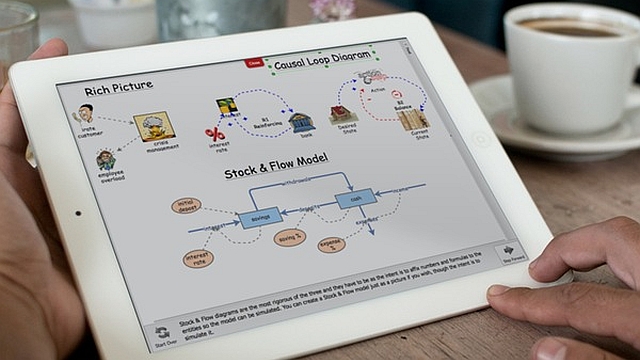
Systems thinking in public policy: Making space to think differently
By Catherine Hobbs. Originally published on the Integration and Implementation Insights blog.
Why does public policy go wrong? How can researchers who are systems thinkers begin to create the conditions in which those involved in public policy may flourish within their possible spheres of ‘horizontal’ influence?
The public policy context and why it goes wrong
Jake Chapman’s System Failure: Why Governments Must Learn to Think Differently (2002; 2004) remains a much-quoted report. In his second (2004) edition, however, Chapman reflects that, despite an enthusiastic reception, there had been “very little substantive shift in either policy or management styles within government” (2004: p.10). Chapman identified a number of difficulties, including:
- Mechanistic thinking and reductionist thinking as the dominant approaches to policy-making.
- A presumption of control and predictability.
- Describing policy and public service issues in terms of ‘delivery,’ rather than co-production of outcomes (such as education and healthcare initiatives) with citizens. Thus, the culture remains focused on delivery and control.
- Misguided presumptions of the ‘evidence-based’ approach, namely that:
- Evidence collected in one place will apply in another.
- There is a linear, or unproblematic, relationship between cause and effect, ignoring non-linear behaviour in complex systems.
- Quantitative and statistical evidence conceal as much as they reveal, systematically ignoring unintended consequences and many other changing variables.
- Failure to recognise that context is critical.
- A presumption of ‘knowing best’, rather than being open to learning, which is the key way to handle complexity.
Instead, what is required is practice and reflection about one’s own experience, and to be willing to work jointly with other perspectives. Most important of all is to be able to reflect on outcomes of actions and to modify behaviours, beliefs and interventions on the basis of that reflection. This is a continuous on-the-job process. Finally, Chapman emphasised the need to establish a systemic learning system at the personal level.
Six steps to create the space to think differently
My steps are based on the experience of part of my doctoral research, undertaken in UK local government. I worked with an English shire local authority to jointly negotiate a 3-month project that could form a general introduction to a variety of systems thinking and similar approaches.
STEP 1: Create a shared brief linked with a topical subject
Start by securing buy-in from senior management for a general introduction to systems thinking, rather than promising an applied systems thinking project; the latter is perhaps more likely to be the expectation. Create a shared brief, and link systems thinking with an issue that is topical, so the project is relevant to the organisation. In my case, the topical subject was innovation. The focus was to be about discussing the potential of systems thinking and innovation, rather than applying systems thinking to a project branded as an innovation project.
STEP 2: Gather a small, unusual group
Gathering an unusual group takes people out of their routine, puts them with different people, and helps break the habit of behaving in a way that limits their own creative thinking. This helps cultivate a realisation that their own professional opinion is important and valued. If possible, find a way to get a mix of levels of seniority and from different departments, but keep it small (ten in my case), so that full and thoughtful conversations can be enabled.
STEP 3: Select a short stimulus pre-reading as a basis for an open discussion
A piece of pre-reading that will act as a stimulus for discussion will have the characteristics of being short, and be suitable for a multi-disciplinary group of people from different levels of the organisation’s hierarchy.
The executive summary of Chapman’s (2004) paper proved to be a good basis for a discussion. It was not subject-specific for the members of the group (avoiding the confines of disciplinary cultures and language), and yet much of it resonated with their experience as professionals.
STEP 4: Find out about each participant’s knowledge of systems thinking prior to the meeting
A pre-meeting one-to-one interview will help informally find out each participant’s knowledge of systems thinking, and also give an opportunity to provide a broad overview of contrasting mechanistic and systemic thinking.
Each participant was shown the diagram below, which contrasts the more usual mechanistic thinking (single perspective, reductionist), with systemic thinking (many perspectives, holism). This diagram provided a good basis for a one-to-one discussion about these different modes of thinking.

STEP 5: Aim for a natural conversation
Conduct the meeting as openly as possible, with limited facilitation/structuring, so that a natural conversation may ensue.
Allowing a group to share their views about problems and challenges may then lead to a realisation that it is in their own gift to do something about some of the problems and challenges identified. Such a natural process allows themes to be identified of ‘enablers’ and ‘constraints’ that are directly relevant to the group.
Following this open discussion about the pre-reading, I provided the group with short summaries of a variety of systems thinking and similar approaches to help explore which approaches might be of interest, such as Causal Loop Mapping, Critical Systems Heuristics, Lean/Vanguard, Soft Systems Methodology, Strategic Assumption Surfacing and Testing, and Viable System Model.
I devised these summaries by referring to an amalgam of resources, including Williams and Hummelbrunner (2011).
STEP 6: Design follow-through
Be prepared to let the participants make their own discoveries and suggestions, and let the research follow through their wishes.
Participants may be drawn to a particular approach which can be followed through as a form of inquiry. In my case, the participants wanted to know more about all the approaches, identifying that a signposting tool would be helpful, which I then moved on to develop as the next stage of the research.
Conclusion: Small-scale collaborative learning in the context of place
An exercise such as the one described provides somewhere to start, working from where people are.
Localised collaborative learning on a small scale can help to overcome the feeling of learned helplessness that can predominate in situations of complexity. It can motivate and energise people to think and work differently through whatever approach from systems thinking they find appropriate and effective for their needs. It can develop contemporary versions of systemic practice that help to create the energy, motivation and practical skills to address complex priorities, constraints and opportunities.
Have you adopted a similar tactic of ‘meeting differently’ as a simple starting point? What effects did it have on ingrained habits of thinking and working? Did it help participants decide what could be within their own remit to make a positive difference?
References:
Chapman, J. (2004). System Failure: Why Governments Must Learn to Think Differently. 2nd edn. (1st edition in 2002.) Demos: London, United Kingdom. (Online – open access): https://www.demos.co.uk/files/systemfailure2.pdf (PDF 466KB)
Chapman, J. (no date). Introducing Systems Thinking. Downloaded from: ‘Accelerating and Amplifying Change: Transforming Consumption and Production Towards Sustainability’, 8 September 2022. (Online – open access): http://scpsystem.weebly.com/uploads/2/1/3/3/21333498/jake_chapman_-_introduction_to_systems_thinking.pdf (PDF 267KB)
Williams, B. and Hummelbrunner, R. (2011). Systems Concepts in Action: A Practitioner’s Toolkit. Stanford University Press: California, United States of America.
Biography:
 |
Catherine Hobbs PhD is an independent researcher located in North Cumbria, as well as being a Visiting Fellow at Northumbria University in Newcastle upon Tyne, UK. She is a social scientist with experience of working in academia and local government, with a focus on developing multi-agency strategies in transport and health. She is interested in developing better links between the practice of local governance and scholarly expertise in order to increase capacity to address issues of complexity through knowledge synthesis. She is also interested in the potential of applying and developing a variety of systems thinking approaches (in the tradition of critical systems thinking), with the innovation and design movements in public policy. |
Article source: Systems thinking in public policy: Making space to think differently. Republished by permission.
Header image source: Diego Dotta on Open Clipart, Public Domain.




The subject of thinking differently has been well underway in the technology world for a couple of decades. At the top of this list are ERP systems (Enterprise Resource Planning). ERP systems model end-to-end business procedures and their sub tasks and processes. Examples of these frameworks include: Hire to Retire; Acquire to Retire; Plan to Inventory; Quote to Cash; Market to Order; Idea to Offering; Prospect to Customer; Customer to Retention, and so forth. These are “and this” thought models. What is missing, as you allude to, are equally diverse human ERP systems. These are common language systems that enable users to see textually and graphically how end-to-end procdures/processes work. Technical ERP systems utilize complex data algorithms that produce consumption-based information. People-oriented ERP systems (few exist), enable people to quickly learn the how-to, why, and what-if knowledge that exists within an organization or body of knowledge. It seems to me that the KM industry needs to be specific about what they want in a technology, otherwise, the KM industry will never escape the status quo that the IT community imposes on the community. I will think about this myself.
I am very pleased that my blog has inspired such thinking about people-oriented ERP systems. Your conclusion sounds a very important one to me, so I very much hope that your further thinking about how this applies to your field, results in fruitful change for the better.